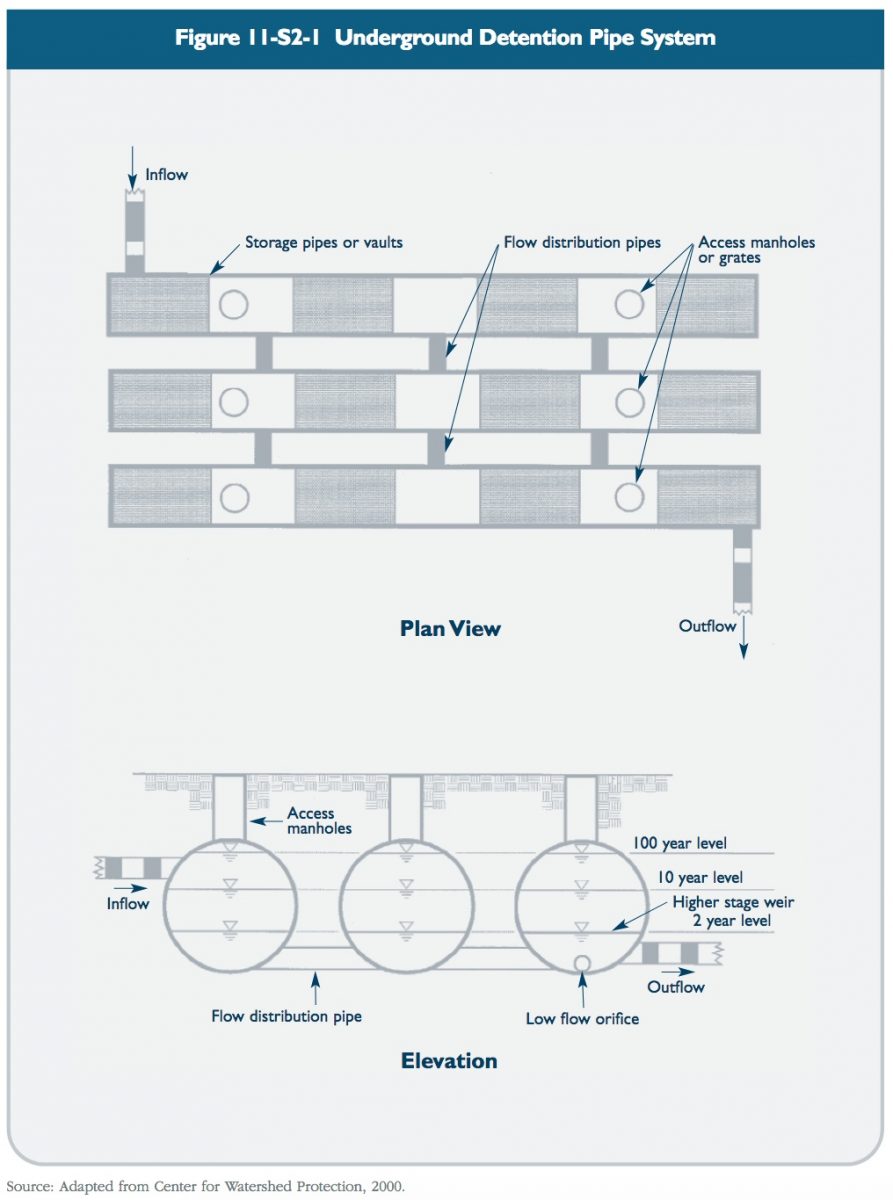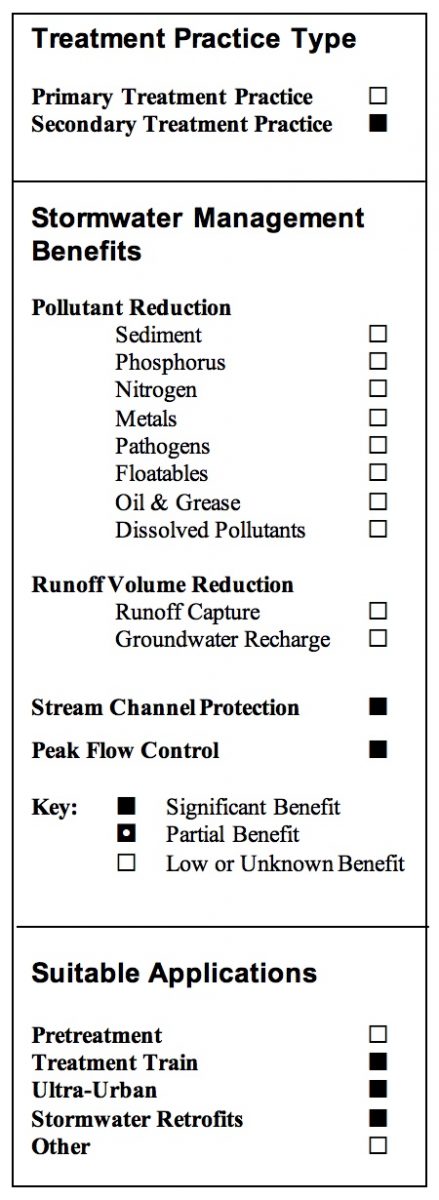Description
Underground detention facilities such as vaults, pipes, tanks, and other subsurface structures are designed to temporarily store stormwater runoff for water quantity control. Like aboveground detention ponds, underground detention facilities are designed to drain completely between runoff events, thereby providing storage capacity for subsequent events. Underground detention facilities are intended to control peak flows, limit downstream flooding, and provide some channel protection. However, they provide little, if any, pollutant removal (i.e., settling of coarse sediment) and are susceptible to re-suspension of sediment during subsequent storms. Figure 11-S2-1 depicts a typical underground detention pipe system. Other modular lattice or pipe systems such as those described in the “Underground Infiltration Facilities” section of this chapter can be used as detention facilities rather than for exfiltration.

Reasons for Limited Use
* Not intended for water quality treatment. Typically provide less than 24 hours of detention time.
* Susceptible to re-suspension of settled material by subsequent storms.
* Do not reduce runoff volume or promote groundwater recharge.
Suitable Applications
* Primarily for water quantity control to attenuate peak flows, limit downstream flooding, and provide some degree of channel protection.
* Suitable for stormwater quantity control at space-limited sites where traditional aboveground detention facilities are impractical due to excessive space requirements. These systems can be installed under parking lots and other developed areas, provided that the system can be accessed for maintenance purposes.
* Useful in stormwater retrofit applications to provide additional temporary storage volume and attenuate peak flows.
* As part of a stormwater treatment train, particularly in combination with other primary or secondary treatment practices that provide pollutant reduction, runoff volume reduction, or groundwater recharge.
Design Considerations
* Siting: Underground detention systems are generally applicable to small development sites and should be installed in locations that are easily accessible for routine and non-routine maintenance. These systems should not be located in areas or below structures that cannot be excavated in the event that the system needs to be replaced. Access manholes should be located at upstream, downstream, and intermediate locations, as appropriate
* Pretreatment: Appropriate pretreatment (e.g., oil/particle separator, hydrodynamic device, catch basin inserts, or other secondary or primary treatment practices) should be provided to minimize the quantity of sediment that reaches the detention system.
* Inlets, Outlets, and Overflows: Underground systems are typically designed as on-line systems that capture frequent runoff events from paved areas. Outlets are sized to restrict maximum flow rates in accordance with local peak flow control requirements, such as controlling post-development peak flows to pre-development levels for storms ranging from 2-year through 100-year return periods. Emergency surface overflows should be designed to convey the 100-year runoff in case the outlet becomes clogged. Potential mosquito entry points should be sealed (adult female mosquitoes can use openings as small as 1/16 inch to access water for egg laying).
References
Center for Watershed Protection (CWP). 2000. The Vermont Stormwater Management Handbook Technical Support Document – Public Review Draft. Prepared For Vermont Agency of Natural Resources.
United States Environmental Protection Agency (EPA). 1999. Storm Water Technology Fact Sheet: Infiltration Drainfields. EPA 832-F-99-018. Office of Water. Washington, D.C.
United States Environmental Protection Agency (EPA). 2002. National Menu of Best Management Practices for Stormwater Phase II.
URL: http://www.epa.gov/npdes/menuofbmps/menu.htm, Last Modified January 24, 2002.
